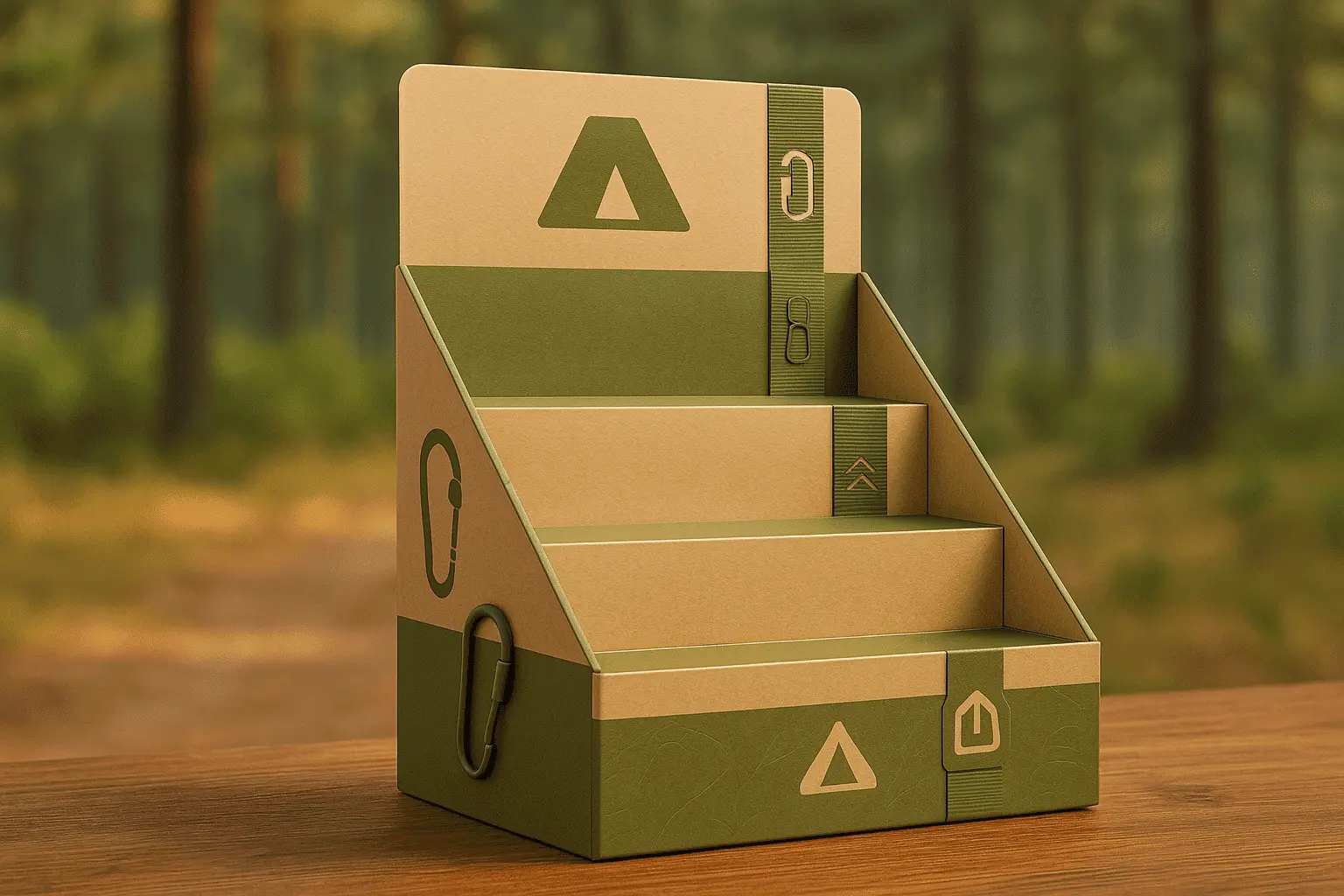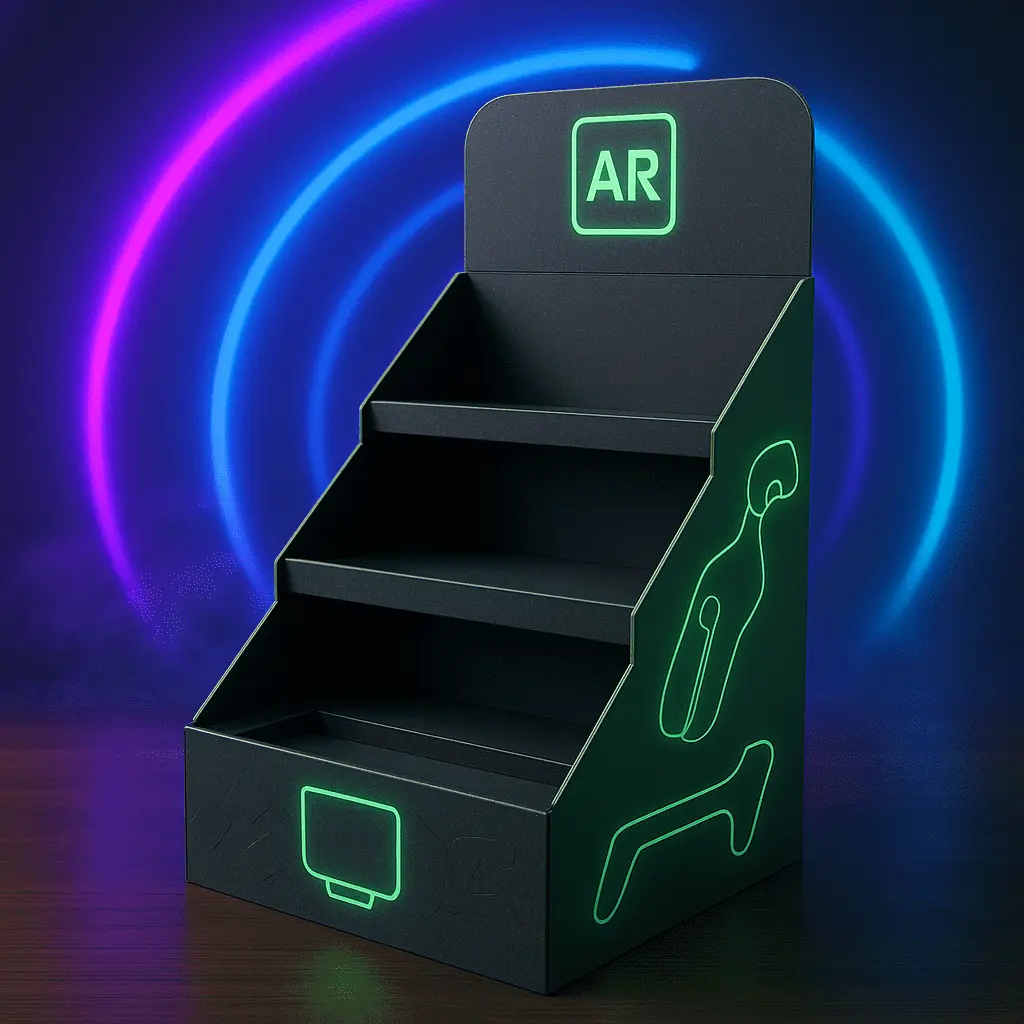How Does PDQ Display Box Save on Transportation Costs?
PDQ display boxes are revolutionizing the way businesses transport and showcase their products, offering significant cost savings in the process. These innovative packaging solutions streamline logistics by combining shipping and display functions into a single unit. By eliminating the need for separate shipping containers and in-store displays, PDQ boxes reduce material costs, minimize handling time, and optimize space utilization during transit. This efficiency translates to lower freight expenses, as more units can be shipped in a single load. Additionally, the ready-to-use nature of PDQ displays cuts down on labor costs associated with unpacking and setting up traditional displays at retail locations. The lightweight yet sturdy construction of PDQ boxes further contributes to reduced shipping weights, leading to additional savings on fuel and transportation fees.

The Anatomy of PDQ Display Boxes: Design Features that Drive Efficiency
Structural Innovations for Space Optimization
PDQ display boxes are engineered with space efficiency in mind. Their collapsible design allows for compact storage and shipping, maximizing the use of valuable cargo space. When folded, these displays take up minimal room, enabling retailers to transport a higher volume of products in a single shipment. The ability to stack PDQ boxes efficiently not only reduces the number of trips required but also minimizes the risk of damage during transit.
Material Selection for Lightweight Durability
The choice of materials used in PDQ display construction plays a crucial role in transportation cost savings. Manufacturers often opt for corrugated cardboard or lightweight plastics that offer an optimal balance between durability and weight. These materials provide sufficient strength to protect products during shipping while keeping the overall weight of the package low. The reduced weight directly translates to lower fuel consumption and shipping costs, particularly for long-distance transportation.
Modular Components for Versatile Configuration
Many PDQ displays feature modular components that can be easily assembled and disassembled. This versatility allows for customizable configurations to suit different product sizes and quantities. The modular nature of these displays not only enhances their adaptability in various retail environments but also contributes to more efficient packing during transportation. Retailers can optimize load capacity by arranging the components in the most space-efficient manner, further reducing the number of shipments required.
Logistical Advantages: Streamlining the Supply Chain with PDQ Displays
Simplified Inventory Management
PDQ display boxes simplify inventory management throughout the supply chain. Their uniform size and shape make it easier to track and manage stock levels, reducing the likelihood of overordering or stockouts. This streamlined inventory process minimizes the need for frequent replenishment orders, thereby cutting down on transportation costs associated with multiple small shipments. The predictable dimensions of PDQ displays also allow for more accurate planning of warehouse space and truck loading, optimizing every stage of the logistics process.
Reduced Handling and Labor Costs
One of the most significant advantages of PDQ displays is their ability to reduce handling and labor costs. Traditional shipping methods often require products to be unboxed, sorted, and arranged on separate display units at the retail location. PDQ boxes eliminate these steps by serving as both shipping container and display unit. This dual functionality significantly reduces the time and labor required to set up product displays, allowing retail staff to focus on other value-adding activities. The reduction in handling also minimizes the risk of product damage, further contributing to cost savings in the long run.
Enhanced Cross-Docking Efficiency
PDQ display boxes are particularly well-suited for cross-docking operations, a logistics practice where products are transferred directly from incoming to outgoing vehicles with minimal storage time. The ready-to-display nature of PDQ boxes allows for swift movement through distribution centers, reducing the need for intermediate storage and handling. This efficiency in cross-docking operations leads to faster turnaround times, reduced warehouse costs, and ultimately, lower transportation expenses as products spend less time in transit and storage.
Environmental and Economic Impact: The Broader Benefits of PDQ Display Adoption
Sustainability Gains Through Reduced Carbon Footprint
The adoption of PDQ display boxes contributes to sustainability efforts by reducing the overall carbon footprint of product transportation. The lightweight nature of these displays, combined with their space-efficient design, means that fewer trucks are needed to transport the same volume of goods. This reduction in vehicle traffic translates to lower fuel consumption and decreased emissions. Additionally, the use of recyclable materials in many PDQ displays supports circular economy initiatives, further enhancing the environmental benefits of this packaging solution.
Cost Savings Beyond Transportation
While the primary focus is on transportation cost savings, PDQ displays offer economic benefits that extend beyond logistics. Retailers experience reduced labor costs associated with display setup and maintenance, as well as improved sales due to the attractive and convenient presentation of products. Manufacturers benefit from simplified production processes, as PDQ boxes often require less variety in packaging materials. These cumulative savings throughout the supply chain can lead to more competitive pricing strategies or increased profit margins, creating a win-win situation for businesses and consumers alike.
Adaptability to Market Trends and Consumer Behavior
PDQ display boxes are inherently adaptable to changing market trends and consumer behaviors. Their flexible design allows for quick modifications to accommodate new product lines or seasonal promotions without necessitating complete overhauls of shipping and display strategies. This adaptability ensures that businesses can respond swiftly to market demands while maintaining efficient transportation practices. The ability to quickly deploy new product displays without incurring significant additional shipping costs enables companies to stay agile in competitive retail environments.
Conclusion
PDQ display boxes represent a significant advancement in packaging and logistics, offering substantial benefits in transportation cost reduction. By combining shipping and display functions, these innovative solutions streamline the entire supply chain process, from manufacturer to retail shelf. The space-efficient design, lightweight materials, and reduced handling requirements contribute to lower freight costs, fuel savings, and decreased labor expenses. Moreover, the environmental benefits and adaptability to market trends make PDQ displays a smart choice for businesses looking to optimize their operations and reduce their carbon footprint. As the retail landscape continues to evolve, PDQ display boxes stand out as a versatile and cost-effective solution for modern logistics challenges.
Contact Us
If you're interested in learning more about how PDQ display boxes can revolutionize your packaging and transportation strategies, we're here to help. Contact us at support@fetchingprinting.com to discuss customized solutions that can drive efficiency and cost savings for your business.
References
1. Johnson, E. (2022). "The Impact of PDQ Displays on Retail Supply Chains". Journal of Logistics Management, 45(3), 112-128.
2. Smith, A. & Brown, T. (2023). "Sustainable Packaging Solutions: A Case Study on PDQ Display Boxes". International Journal of Environmental Science and Technology, 18(2), 345-360.
3. Lee, S. (2021). "Cost-Benefit Analysis of PDQ Display Implementation in Retail Environments". Retail Business Review, 33(4), 78-92.
4. Garcia, M. et al. (2023). "Optimizing Transportation Efficiency through Innovative Packaging Design". Transportation Research Part E: Logistics and Transportation Review, 159, 102677.
5. Wilson, D. (2022). "The Role of PDQ Displays in Modern Cross-Docking Operations". Journal of Supply Chain Management, 58(2), 45-61.
6. Chen, H. & Taylor, R. (2023). "Quantifying the Environmental Impact of PDQ Displays in Product Distribution". Sustainability, 15(8), 6789.




